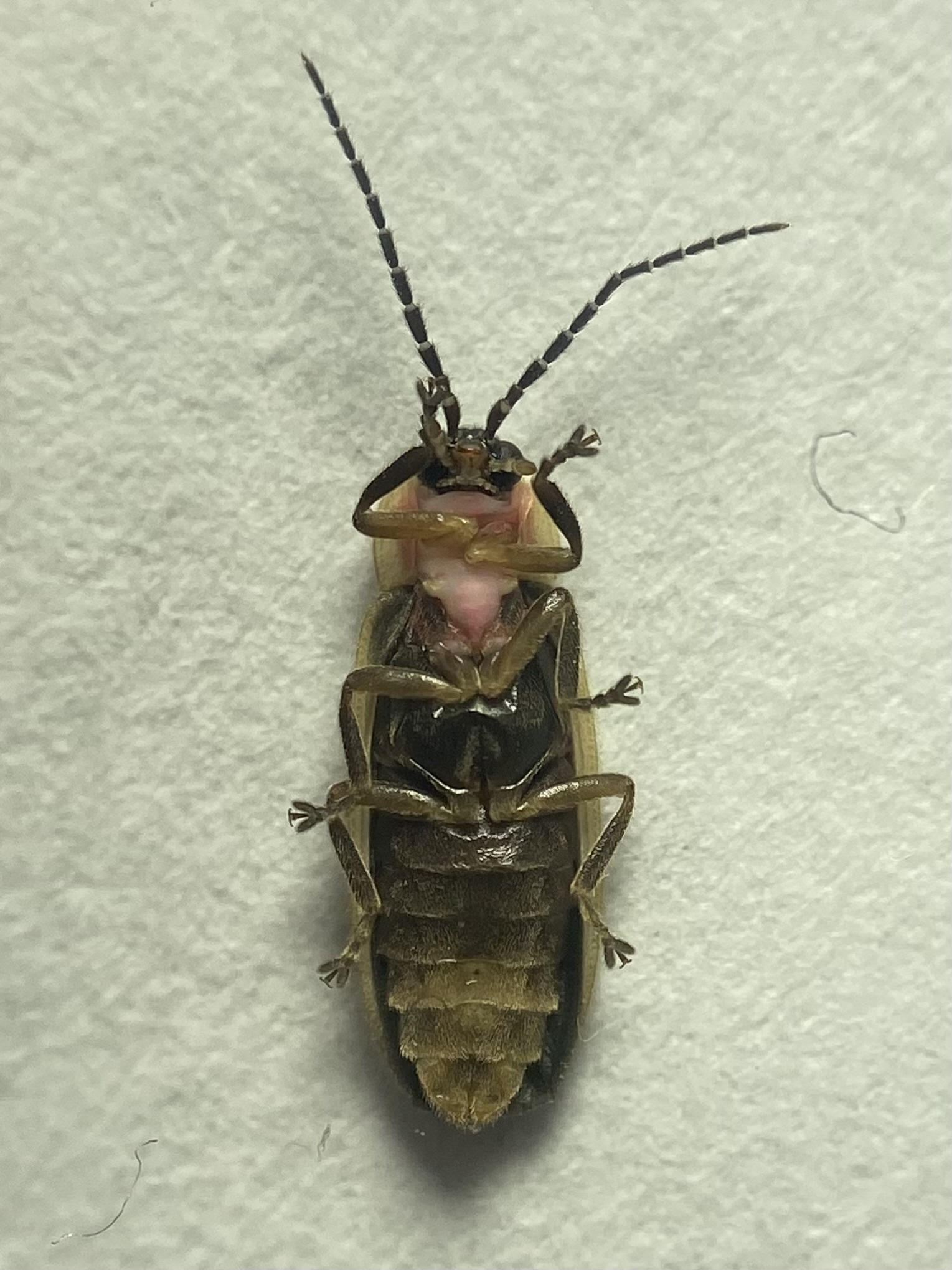Map Snapshot



2 Records
Seasonality Snapshot
Source: Wikipedia
| Photinus cookii | |
|---|---|
| Scientific classification | |
| Domain: | Eukaryota |
| Kingdom: | Animalia |
| Phylum: | Arthropoda |
| Class: | Insecta |
| Order: | Coleoptera |
| Suborder: | Polyphaga |
| Infraorder: | Elateriformia |
| Family: | Lampyridae |
| Genus: | Photinus |
| Species: | P. cookii
|
| Binomial name | |
| Photinus cookii Green, 1956
| |
Photinus cookii, or Cook's firefly[2] is a species of day-active firefly in the beetle family Lampyridae.[3] It is found in North America in the Eastern USA, including Florida and Texas.[4][5][6]
Description
[edit]P. cookii is a small beetle, with adults measuring 5–7 mm (0.2–0.3 in) long. The wing covers, or elytra, are dark, with wide, light-colored side margins. The head shield, or pronotum, is pale yellow with a dark bar in the center, reaching from the top of the pronotum to the base. The body has short hairs, which are visible with a microscope. P. cookii does not have working lanterns on its abdomen, although there may be small vestigial lanterns or light patches on the final 2 segments. The males and the females are similar in appearance. [2][7]
Etymology
[edit]The genus name Photinus is from the Greek word for shining or bright.[8] The species was first described by John Wagener Green in 1956.[7] The species is named as an honorific for Mr. Carl Cook, who had collected the holotype male and other specimens in Carilhope, Kentucky, 11-VII-1946. The species name is therefore noun in genitive case.
Several years later Lloyd (1966) [9] published an overview of Photinus in USA, and wrote the name as "Photinus cooki" (i.e. altering the ending to a single "i" as "cooki"), perhaps considering it as a correction; but per nomenclatural regulations in ICZN 31.1, the original spelling of "cookii" is admissible and therefore it is subsequently retained.
Life Cycle
[edit]Beetles such as P. cookii go through four life stages: egg, larva, pupa, and adult. Photinus fireflies spend the majority of their lives as larvae, which are bioluminescent and likely live below the soil surface, eating snails, worms, and other soft-bodied invertebrates. Adult P. cookii appear in summer, in June and July.[1][2]
Behavior
[edit]P. cookii is a non-flashing firefly, active during the day rather than at night. It is believed that these fireflies locate a mate using pheromones.[2]
Habitat
[edit]Adults are seen during the day in gardens, yards, open woodlands, fencerows, and open areas.[2]
Range
[edit]This species has been reported from Missouri to the north, Alabama to the south, North Carolina to the east, and Texas to the west.[1]
References
[edit]- ^ a b c Walker, A. (2021). "Photinus cookii". IUCN Red List of Threatened Species. 2021: e.T164076669A166771798. doi:10.2305/IUCN.UK.2021-1.RLTS.T164076669A166771798.en. Retrieved 18 July 2024.
- ^ a b c d e Faust, Lynn Frierson (2017). Fireflies, Glow-worms, and Lightning Bugs. University of Georgia Press. ISBN 978-0-8203-4872-8.
- ^ "Photinus cookii". Integrated Taxonomic Information System. Retrieved 2023-07-27.
- ^ "Photinus cookii". GBIF. Retrieved 2023-07-27.
- ^ "Photinus cookii species Information". BugGuide.net. Retrieved 2023-07-27.
- ^ "Photinus_cookii". iNaturalist. Retrieved 2023-07-27.
- ^ a b Green, J.W. (1956). "Revision of the Nearctic species of Photinus (Lampyridae: Coleoptera)" (PDF). Proceedings of the California Academy of Sciences. Fourth. 28 (15): 561–613. ISSN 0068-547X.
- ^ "φωτεινός". Wiktionary, the free dictionary. 17 March 2023.
- ^ Lloyd, J.E. (1966). "Studies on the Flash Communication System in Photinus Fireflies". Miscellaneous publications (University of Michigan. Museum of Zoology) (130): 1–95.
Further reading
[edit]- Green, J. W. (1956). "Revision of the Nearctic species of Photinus (Lampyridae: Coleoptera)" (PDF). Proceedings of the California Academy of Sciences. Fourth Series. 28: 561–613. ISSN 0068-547X.
- Lobl, I.; Smetana, A., eds. (2007). Catalogue of Palaearctic Coleoptera, Volume 4: Elateroidea - Derodontoidea - Bostrichoidea - Lymexyloidea - Cleroidea - Cucujoidea. Apollo Books. ISBN 978-8788757675.





